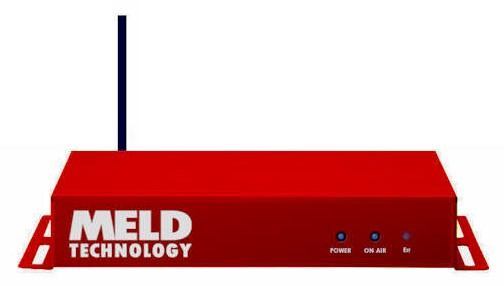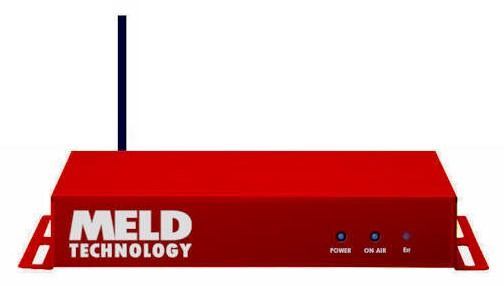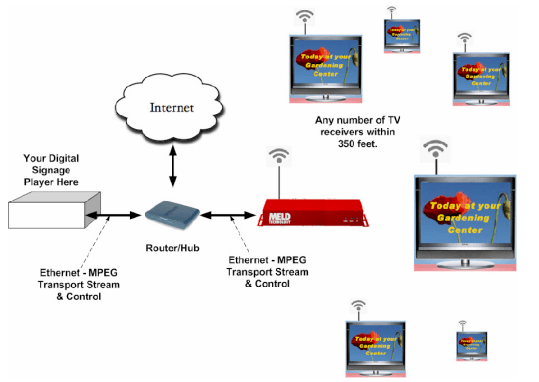
When Digital Signage Really Would Be TV …
February 6, 2013 by Dave Haynes
 I have seen press releases and stories here and there about how the broadcast spectrum came available when analog TV went digital had opened up white space to use for micro broadcasts in distinct settings, like digital signage programming in big box retail and large corporate facilities.
I have seen press releases and stories here and there about how the broadcast spectrum came available when analog TV went digital had opened up white space to use for micro broadcasts in distinct settings, like digital signage programming in big box retail and large corporate facilities.
The dual-headed argument has been that WiFi is problematic in these environments, and long wiring runs are costly and inflexible.
I have not seen this stuff get a lot of traction in the marketplace, and have wondered if part of that owes to how engineers are running the marketing departments, and assuming us mere mortals understand what they are going on and on about.
Another release like that plopped in my mailbox today, so after I gave up getting mt decoder ring to figure it out, I asked the company if we could do a Q&A. The press was from a company called West Pond Enterprises, which does connectivity solutions and says it is specializing in DTV white space technology. Its FlexStream suite of products suits the digital signage industry, the company suggests.
Lots of industry people – me included – have bristled at branding efforts that call various on-premise networks “InsertCleverNameHere TV.” Using this tech, it really is TV.
Steve Hastings, President & CEO, kindly stepped up and fielded my questions:
Q: In simple, non-technical terms, what are you guys doing and offering?
We are offering the ability to distribute content in-store without wi-fi or wires. Our first product, FlexStream Tribute, leverages pico broadcasting technology over DTV white space. This product combines the output of third party players (like Brightsign, Coolsign, etc) onto a single RF transport. It also provides content protection, advanced compression, and display management features when our FlexStream Delta receiver is used. Otherwise, the transport is viewable on any consumer TV. This is a simple reliably solution that can distribute content in applications where it is impractical to run wires or deal with the inconsistencies of shared spectrum wireless communications (i.e. WiFi).
Note: Ok, so kinda sorta non-technical. In really simple terms, this is like setting up a TV station in a Costco and the TVs can pick up that channel, which could be signage content.
Q: What is the range of transmissions?
In-store is approximately 250 feet. A centrally located pico broadcaster can reach most of a 120,000 sq ft store (single floor big box store).
Q: What are the technical advantages over WiFi?
Reliability. The white space bandwidth is licensed spectrum and therefore there is no competition with other devices for use of the bandwidth. Shared spectrum requires sophisticated collision detection and avoidance technology that often breaks down in retail environments. The level of congestion and interference varies by installation and is unpredictable, making it difficult to rely on WiFi when deploying digital signage. This solution is predictable and reliable.
Translation: WiFi can suck in a packed environment. This doesn’t.
Q: It at least looks like there are a lot of components required to put all this together. What all is needed, why and where do they go?
It can appear complex, but deployment can be as simple as your player, and HDMI cable to the FlexStream Tribute, and a CAT5 Ethernet to the pico broadcaster modulator. Once powered, any consumer TV within reach of the signal can receive and display your players content. There are a number of configurations that alter this configuration.
– Use of multiple HDMI players
– Use of streamers rather than players
– Use of video camera inputs
– Use of internally stored and streamed content
– Use of multiple DTV white space frequencies (pico broadcasters)
– Content protection, requires a FlexStream Delta receive and decrypt the content before passing it on to the TV or display (HDMI)
– Advance encoding enables more content streams in a single transport (DTV white space frequency), requires FlexStream Delta
– Display device control (power on/off of display, volume, virtual channel selection, etc.), requires FlexStream Delta.
– No integrated cell module, Internet connection is provided externally via Wi-Fi or Ethernet
As you can see, the device is very flexible. It is modular in design so that only a single FlexStream Tribute is required to get started. Additional units can be added as necessary. i.e. More HDMI inputs, more bandwidth (additional pico broadcasters), additional virtual channels (content stream output).
Q: What’s the ROI argument for this over more “conventional” methods, like wifi and multiple PCs or signal distribution systems?
Being wireless enables the network operator to move their displays throughout their space without costly cable runs or in areas where cable is just not available. Retailers frequently need to change the location of a digital sign, and that can lead to delays and additional expense. The FlexStream installation is quick and simple. Using whitespace, FlexStream offers a reliable wireless signal, not shared with any other network like WiFi.
For ad supported networks, network downtime costs the network operator those advertising dollars. The ability to broadcast multiple channels increases the amount of content and therefore advertising that can be displayed. WiFi signals are often congested in a retail location, used for back office transactions and internal support and further burdened by customer use.
Q: Is it less costly? More?
The initial investment from a hardware perspective is a bit more expensive than WiFi, but less expensive than a hard-wired installation. Our advantage over WiFi is reliability and predictability. From an on-going management perspective, our solution is less expensive, and when reliability is factored in, the overall ROI makes this solution much more valuable.
Q: What’s needed if you did a chain of stores all the same way, and how would that be managed?
FlexStream Confluence is a web-based management system, enabling the customer to remotely manage all facets of their connected network. For large deployments, this service can be integrated into the customers current content management system.
Q: Do you have systems now running? Where and with whom?
The pico broadcasters are commercially available. The FlexStream products are being announced at DSE and trials are scheduled to begin in April.
Q: What will you be showing at DSE?
Multiple content streams from multiple sources to multiple displays using DTV whitespace. The FlexStream Tribute, Delta and Confluence will all be leveraged for this technology demonstration.
Q: Is digital signage what you’re focused on, or is it one of several verticals and applications?
We believe digital signage, especially end-cap displays, will quickly leverage this technology. We believe there are also applications of this technology in security and consumer products.
The Hudson, MA-based company is working with ans using technology from Sunnyvale- CA-based MELD Technology, which says it develops systems and intellectual properly to simply, efficiently, and cost effectively serve content to any digital TV ever made.
I don’t know anywhere near enough about this stuff to say much of substance, other than to note WiFI can indeed be a problem, and fishing, pulling, dropping and hiding ethernet cable everywhere in cavernous retail environments is a costly, time-consuming problem. TV broadcasting is nothing new, so we know that works.
The other thing I know if the industry has been jack-hammering end-users to NOT use TVs, but commercial flat panels built for extended use and rarely having TV tuners onboard. That’s a bit of a problem for someone to sort.
This core technology was demo’d last year at DSE with Brightsign, but I’ll try to make a point of swinging by to see how all this comes together. If you have thoughts on the merits and perils of this, use the comments.
You will also have seen this technology promoted by National Datacast, a commercial subsidiary of PBS (yup, the public broadcaster). There is come connective tissue between Hastings’s old company and National Datacast.




Leave a comment